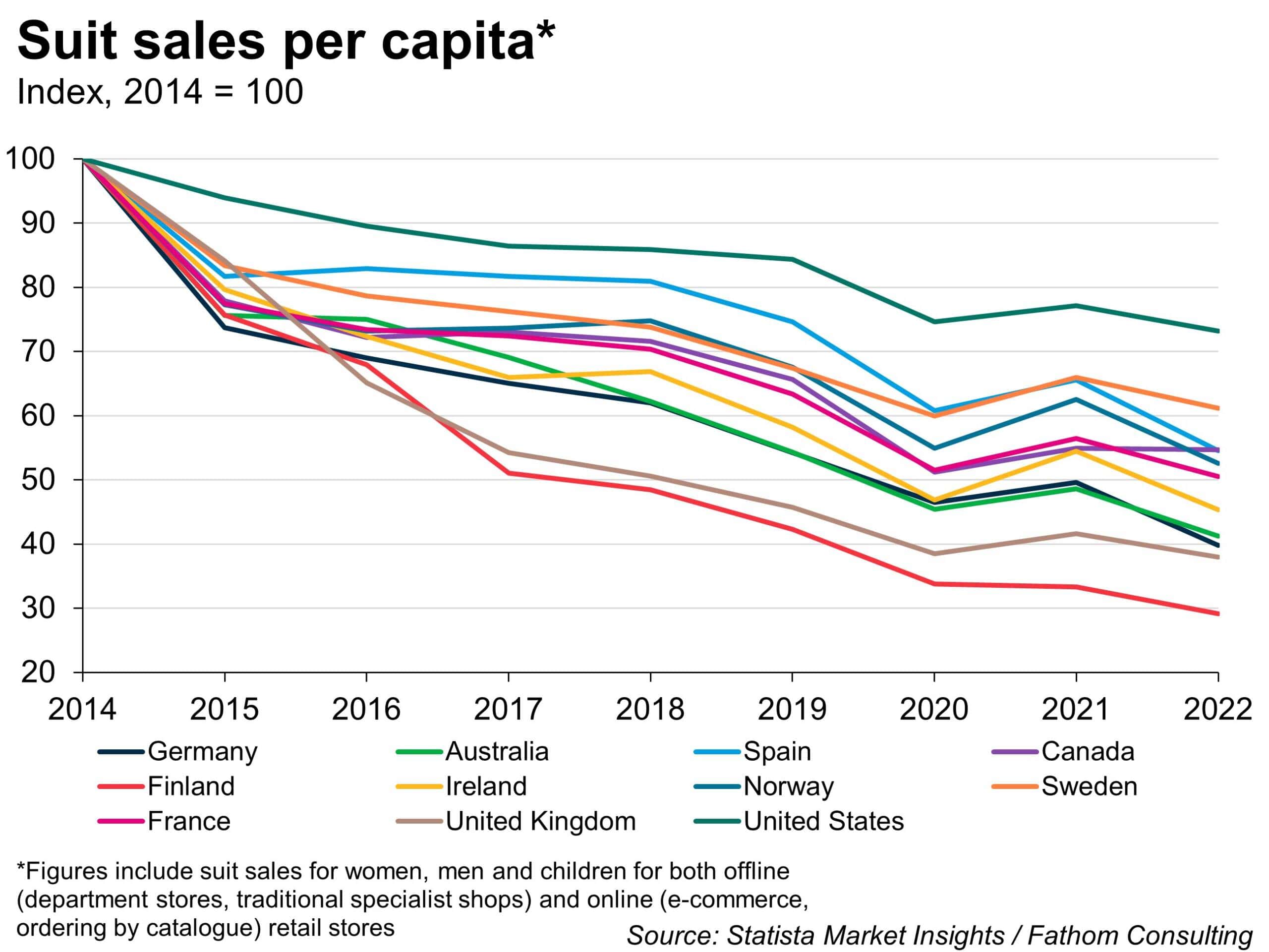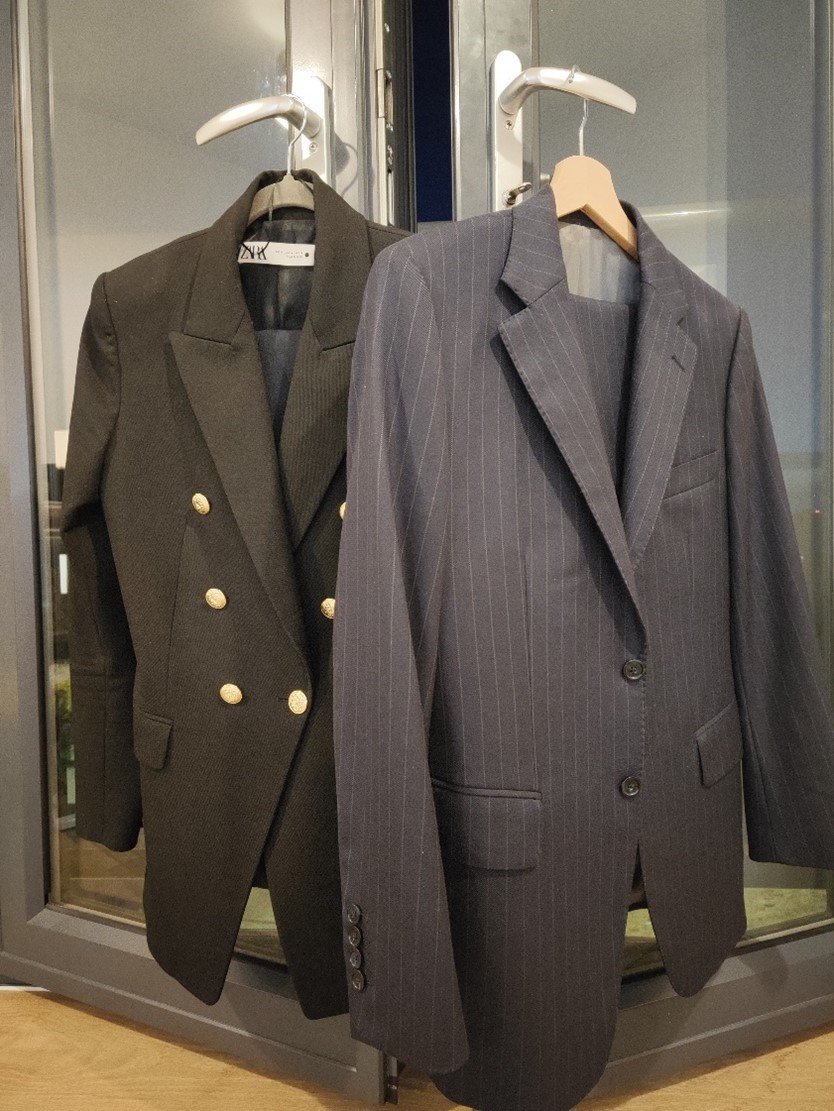A sideways look at economics
Back in 2018, I started my first work experience at a large Spanish insurance company. One day, a group of outsiders came to our floor to lead a conference about new ways of working. I will never forget the moment the presenter approached me and a colleague, both impeccably dressed in our smartest suits, looked us up and down and said: “You guys don’t have a clue what the movie is about — digitalisation has arrived!!”
Not so long ago, wearing a suit in a corporate environment was something you did without question. The office was considered a formal place, and as such wearing a suit was the natural thing to do as it projected elegance, authority and mastery of a profession. However, over the past few years the western world has experienced a trend that has not been talked about much but is overwhelmingly evident: the suit is falling out of use. As a big fan of the suit, I had a glimmer of romantic hope that by moving to the financial capital of Europe I would be able to spot them by hundreds and enjoy the different shapes, patterns, and colours that these versatile garments can offer. As you can imagine, the reality has been very different: when I jump on the Northern line, one of the busiest underground lines which connects the suburbs with London’s financial district, suits are conspicuous by their absence.[1] No one, not even at those types of companies traditionally less prone to change, can escape the evolution of the times: financial institutions, consultancies, law firms and a long etcetera have all been relaxing their dress codes.
The key question is, why? What has happened to spark such a big change in dressing standards? Well, in reality there isn’t a single reason, but instead a few occurrences over the years have gradually led to this outcome. Financial institutions were the first to make a move: their reputation was severely damaged after the global financial crisis, forcing them to improve their image to regain public trust — relaxing dress codes was a way to appear more approachable and less formal, signalling a departure from the perceived elitism and rigidity often associated with the industry. Startups and technology companies also popularised a more relaxed dress code, which encouraged other institutions to change their dressing standards too so as to increase their appeal to younger professionals who were more accustomed to casual attire, and so make it easier to attract and retain talent. Companies have also been adapting to the preferences of clients, who feel more comfortable interacting with professionals who dress in a way that aligns with their own choices and values. As we can see in the chart below, the trend has been going on for years, and pandemic-related factors such as working from home have simply dealt the suit the final blow.

The first thing that strikes me about this chart is that despite significant geographical and cultural differences between countries, the overall picture is quite similar, showing how interconnected global fashion trends are. However, there are interesting differences as well. The market in the US has been more resilient, with sales falling ‘only’ 25% since 2014. On the other side of the spectrum, we have countries such as Finland or the UK, whose citizens seem to have had enough of suits, so much so that the UK Office for National Statistics last year removed the suit from the CPI basket, which it had been part of since 1947. Seeing is believing!
Despite this bleak outlook that I have just described, I do think that the suit still deserves someone to go into battle in its favour. After all, it has been a crucial part of men’s wardrobe for centuries since King Charles II wore it for the first time in 1666. Among its main advantages, I would highlight the undeniable fact that it makes the wearer look more appealing and elegant, saves you the annoying task of thinking about what to wear, and can even be very comfortable to wear provided that it has been tailor-made.[2] True, it may not be the go-to attire in most people’s wardrobes, in which casualness prevails over anything else, but the swings and roundabouts of fashion mean that the suit may make a comeback at some point, most likely driven by trends rather than managerial diktat. Meanwhile, as the proud contrarians we are, my Darya and I will continue to wear our suits to the endless cultural and social activities that this exciting city has to offer us![3]

[1] Instead, it appears to be popular to wear a ‘Puffa’ jacket that in Spain we would call ‘fachaleco’, a slang term which mocks the fact that it is commonly worn by people who identify as right-wing. I personally find the garment horrendous.
[2] Fortunately, industrial tailoring has made tailored suits affordable for the average citizen. A tailor will take the measurements of your body, you will select the fabrics and design of the suit, but it will be a machine that creates the suit (once it’s ready, the tailor can make minor adjustments for the final result). This means that you can have a high-quality piece at a very reasonable price.
[3] In this post, we have focused our attention on suits, but what about ties? Contrary to what you may think, the market for ties is alive and kicking. Have a look! https://www.bloomberg.com/news/articles/2023-05-18/ties-no-longer-rule-the-office-but-sales-are-surging-nonetheless
More by this author